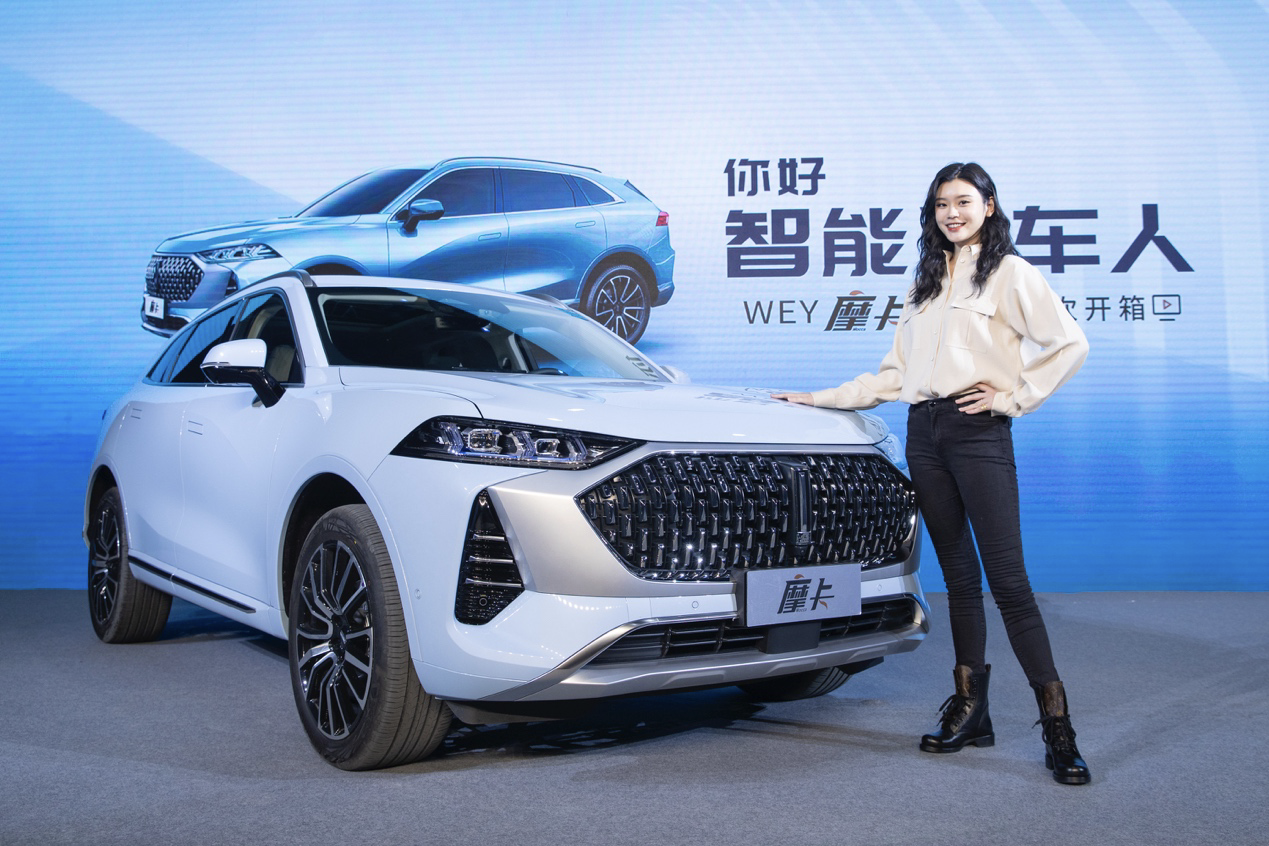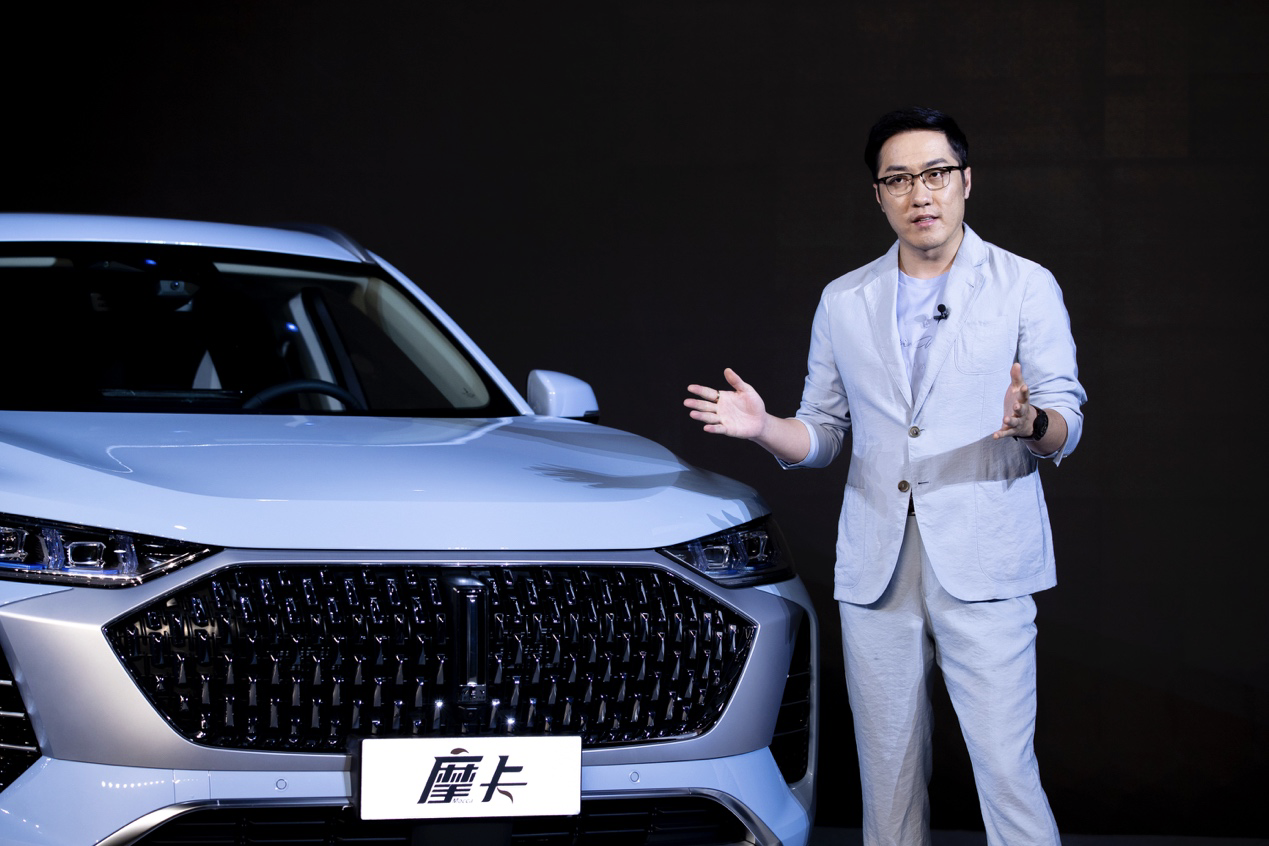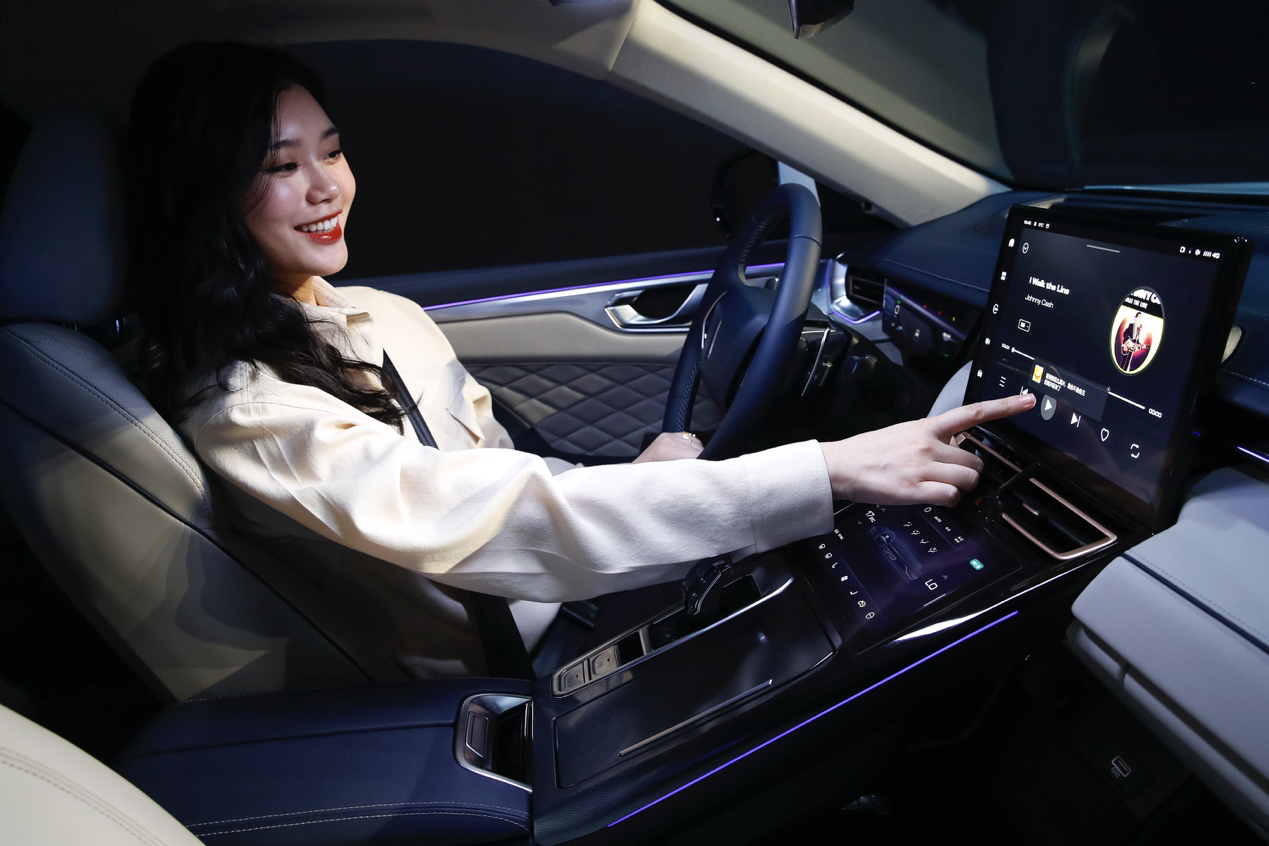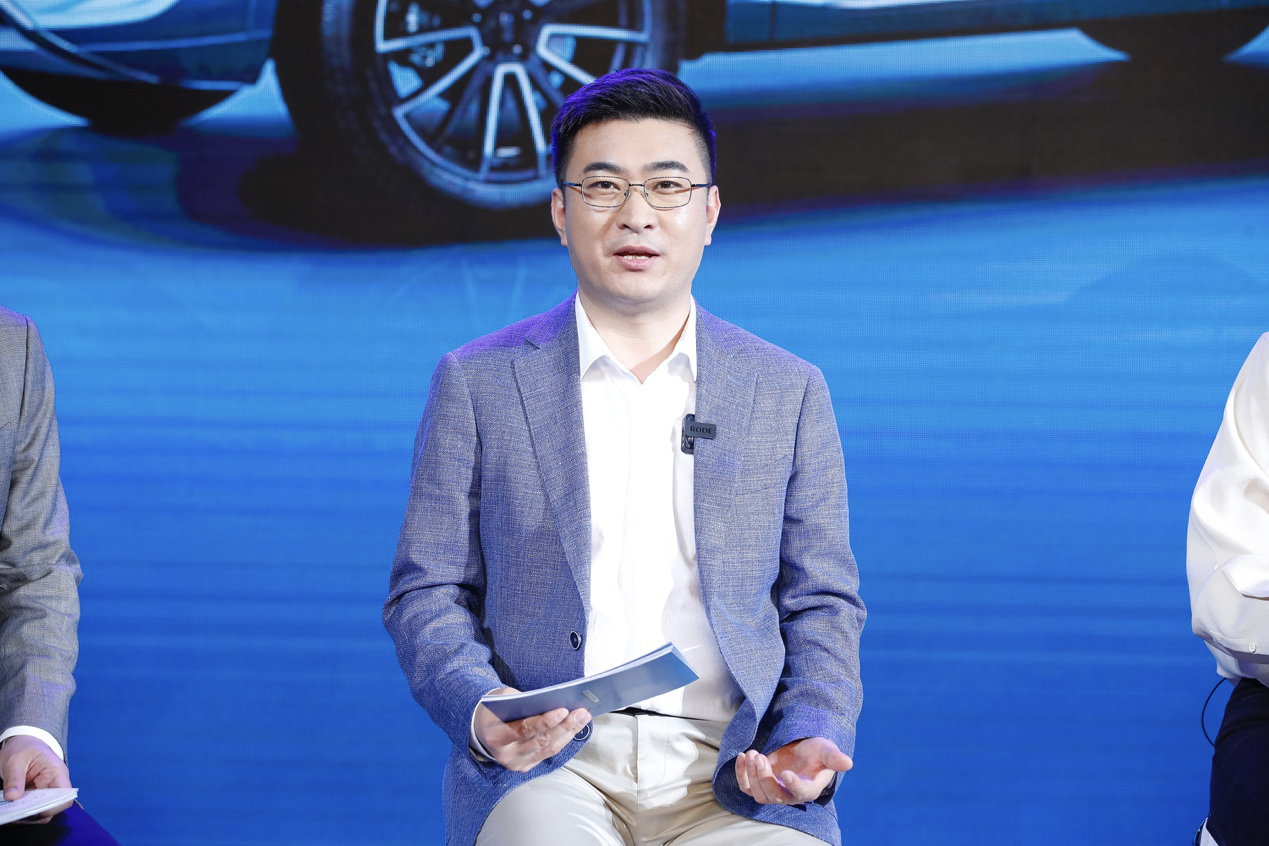On the evening of March 9th, WEY Mocha had its first unboxing live broadcast. Liu Pengkai, the product director of WEY Mocha introduced HWA, NOH, and HWP.
HWA (Highway Driving Assist) is based on current highways and rapid city roads. After removing the steering knob, the vehicle can independently change lanes.
NOH (Navigation-guided Highway Assist) adds high-precision maps and is capable of point-to-point automatic driving on highways based on navigation. It can automatically change lanes, overtake, and recognize entrance and exit ramps.
HWP (Highway Pilot Driving) can intelligently recognize entrance and exit ramps, and navigate past toll booths when driving on highways.

Mocha uses three types of sensing hardware – LiDAR modules, mmWave radar, and cameras as well as two controllers (EQ4 chip, Infineon TC397) and high-precision maps. Even L4 or higher level autonomous driving can be achieved. During the live broadcast, Mocha demonstrated “summon”, automatic parking, and facial expression recognition.
5G + V2X enables various applications, such as reverse overtaking warnings, abnormal vehicle reminders, collision warnings for vulnerable traffic participants, green wave speed guidance, and front-end congestion reminders.

Based on sensing hardware and chip algorithm foundation, Mocha, also implements many scenario applications in parking.
Integrated parking is based on panoramic viewing images and anti-collision radar system. Suitable parking spaces are identified automatically, and the vehicle is controlled to complete steering, shifting, and braking operations through radar sensors and cameras detecting obstacle information and parking lot lines. The driver only needs to follow the system prompts to enter and exit the parking space.
Memory parking consists of 12 ultrasonic sensors, 4 panoramic cameras, and a controller. The controller uses the TI chip scheme and can learn the route within 50 meters of the parking space through the V-SLAM algorithm. When the route learning is successful and completed, the next time the vehicle can autonomously complete low-speed cruising and parking on this route. Also, the vehicle can be summoned from the parking space to the pickup point, mainly for parking scenarios in residential areas.Valet parking is powered by TDA4 chip, providing 8 TOPS AI computing power and integrating functional safety MCU. The system combines sensors such as ultrasonic sensors, panoramic cameras, and front cameras with high-precision parking lot map information. When the vehicle arrives at a parking lot that supports valet parking, the driver and passengers can get off at the designated drop-off point, and the vehicle autonomously completes the route planning and drives to the parking space to park. At the same time, the driver can remotely summon the vehicle to the designated pick-up point with one click. The main application is in supermarket parking scenarios and other areas.
In Exploration mode, when the user turns on the forward exploration function, the system controls the steering wheel, brakes, and throttle to explore forward automatically.

Regarding the intelligent cockpit section, the Mocha is equipped with the Snapdragon SA8155 chip, realizing human-computer interaction calculation.
The AR-HUD can visually integrate navigation and driving assistance information with the road in a more intuitive way, reducing the user’s attention shift and improving driving safety.
With the 3D model, the vehicle’s perception of surrounding environmental data, including lane lines, object positions, object types, cones and road barriers, is realistically restored. Currently, it supports standard and concise modes, and before SOP, it can support four lane lines and ASAD vertical 150m, horizontal left and right within 8m. In subsequent FOTA, weather recognition will be added. Currently, it supports standard and concise modes.
After the Bluetooth key is activated, the phone and the vehicle’s Bluetooth are mutually connected, enabling the vehicle to be controlled by the phone. When the user forgets the key, they can still perform parking, window/sunroof/rear door opening and closing operations.
The “I want to complain” function is a user feedback portal in the car. Users can activate the car’s voice-enabled complaint function, provide feedback, and the system will intelligently analyze and distribute it to the call center, product development teams, and users through big data connections to enable timely responses and continual improvement in software updates.
🔗 Source: [WEY Mocha]
This article is a translation by ChatGPT of a Chinese report from 42HOW. If you have any questions about it, please email bd@42how.com.
